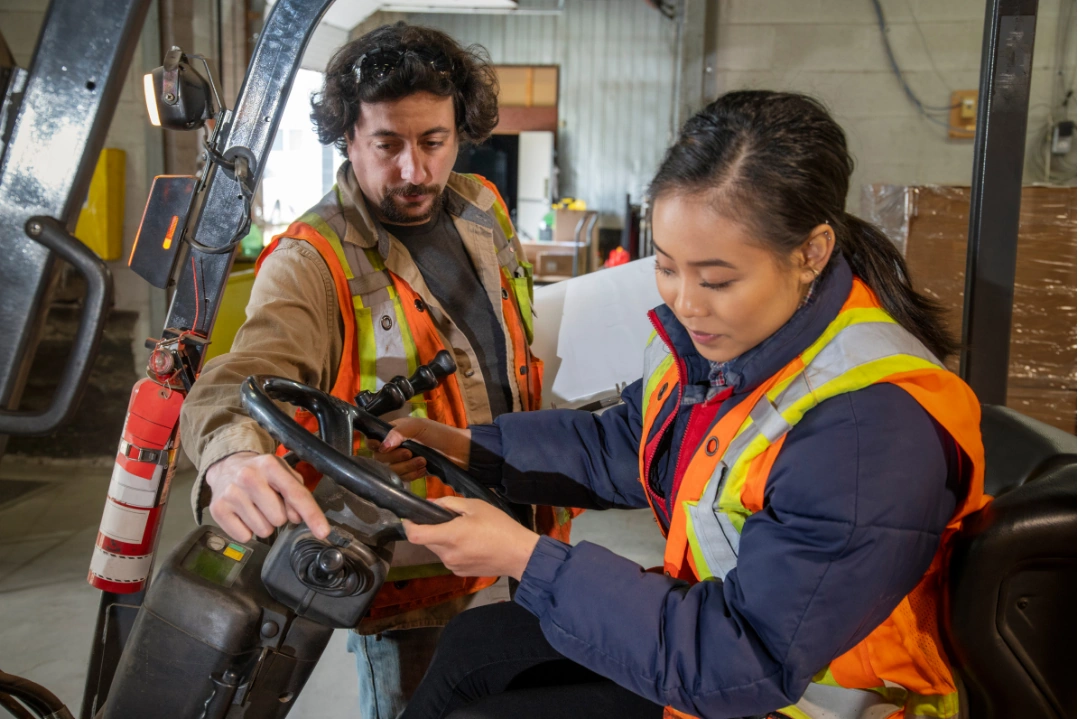
Understanding And Managing Ergonomic Hazards
Ergonomic hazards—such as repetitive movements, awkward postures, and extended periods of physical strain—are a significant concern in today’s workplaces. If left unaddressed, these risks can quietly compromise health, reduce efficiency, and lead to long-term injuries. For lone workers, the absence of direct supervision makes identifying and mitigating hazards even more challenging, thereby increasing the potential for harm.
Employers across various industries must adopt a proactive approach to managing ergonomic risks in lone working environments. Prioritizing safety and compliance helps prevent injury and promotes long-term productivity and workforce stability. Learn the ergonomic challenges and strategies to help employers safeguard their lone workers through informed, preventive action.
What Are Ergonomic Hazards?
Ergonomic hazards refer to workplace conditions that can harm the musculoskeletal system. These hazards often stem from repetitive motions, awkward postures, or extended physical activities that strain the body. For lone workers—those who work without direct supervision—these risks can be challenging to manage. Lone workers may not quickly notice or address ergonomic issues without the presence of colleagues or supervisors, which increases their risk of injury.
Lone workers commonly face ergonomic challenges, including repetitive strain injuries, from tasks that involve repeated motions, such as typing or assembly work. Working in confined spaces or using poorly adjusted equipment can lead to awkward postures, resulting in discomfort and long-term musculoskeletal issues. Additionally, spending long periods standing or sitting without breaks can worsen these risks.
Recognizing these hazards enables employers to implement strategies that reduce injury risks and enhance workplace safety. By understanding the ergonomic challenges faced by lone workers, employers can take proactive measures to create a safer and more efficient work environment.
Identifying Ergonomic Hazards in Lone Work Environments
Identifying ergonomic hazards in lone work settings helps prevent injuries and maintain high productivity. Due to their isolation, lone workers face specific challenges, making it essential for employers to identify and effectively manage these risks.
Workers in logistics and delivery often lift heavy packages, risking back injuries without proper techniques or equipment. Office workers might endure long hours at poorly set-up desks, leading to discomfort from misaligned chairs or screens. Construction workers who use machinery may adopt awkward postures, thereby increasing their risk of musculoskeletal issues. Caregivers face ergonomic risks when lifting patients or maneuvering equipment in tight spaces.
Employers should thoroughly assess these environments by observing tasks, evaluating physical demands, and consulting workers about their experiences. By identifying these hazards, employers can implement targeted strategies to enhance safety and productivity for lone workers.
Impact of Ergonomic Hazards on Lone Workers
Ergonomic hazards can seriously affect the health of lone workers, often leading to musculoskeletal disorders like carpal tunnel syndrome, tendonitis, and lower back pain. These issues arise from repetitive movements, awkward postures, or long periods of inactivity. Without immediate support, lone workers might unknowingly continue harmful practices, increasing their risk of injury.
Beyond physical health, these hazards can also impact mental well-being. Chronic pain can decrease job satisfaction and increase stress, ultimately affecting productivity. For employers, this means potential absenteeism, higher turnover, and increased healthcare costs, underscoring the need for proactive measures.
Ergonomic hazards don't just affect individuals; they can have significant organizational consequences. Employers can foster a healthier workforce, boost morale, and enhance efficiency by investing in ergonomic solutions and promoting a safety-first culture. Prioritizing ergonomic safety helps mitigate risks in lone work environments, supporting a sustainable and productive work environment.
Strategies for Mitigating Ergonomic Hazards
Conducting Ergonomic Assessments
Start by thoroughly assessing the work environment to pinpoint potential ergonomic risks. This involves observing daily tasks, analyzing physical demands, and gathering feedback from workers. Regular assessments help identify necessary adjustments to workstations, tools, and procedures to ensure optimal performance. Hiring ergonomic specialists can provide tailored insights and recommendations for specific job roles.
Implementing Ergonomic Solutions
Once employers have identified the risks, they should implement solutions that minimize strain. For office workers, this might mean investing in adjustable chairs or sit-stand desks. In construction or logistics, providing lifting aids or anti-fatigue mats can make a significant difference. Redesigning workspaces to encourage natural movement and reduce awkward postures can also be beneficial. Tailoring these solutions to the unique needs of lone workers creates a safer and more efficient environment.
Training and Education for Lone Workers
Training helps manage ergonomic hazards. Employers should ensure that workers are informed about safety practices and know how to identify potential risks. Training should cover lifting techniques, posture correction, and the importance of regular breaks. Encouraging open communication allows workers to easily report concerns. By prioritizing education, employers can cultivate a workforce that actively participates in maintaining a safe work environment.
Compliance and Regulatory Considerations
Standards from organizations, like the Occupational Safety and Health Administration (OSHA), offer clear guidelines to help prevent work-related musculoskeletal disorders. These rules create safer workplaces and reduce injury risks.
Following these regulations safeguards employees and protects employers from legal issues. Stay updated on the latest ergonomic standards and incorporate them into safety protocols. Regularly review and update safety policies to ensure compliance with current regulations and best practices.
Committing to ergonomic safety can also enhance an employer's reputation, making the company more attractive to job seekers. By prioritizing compliance, employers can foster a culture of safety and responsibility, ultimately benefiting both the workforce and the organization.
Conclusion
Safeguarding lone workers begins with recognizing how ergonomic hazards can quietly undermine their health, comfort, and productivity. From repetitive strain to awkward postures and prolonged static work, the risks discussed throughout this blog underscore the importance of vigilance in isolated work settings.
Employers can take meaningful steps to reduce these risks by conducting ergonomic assessments, tailoring solutions to individual roles, and equipping lone workers with the necessary training to recognize and respond to early signs of strain. These efforts not only strengthen workplace safety but also enhance performance and morale.
Organizations foster a culture of care and responsibility by embedding ergonomic practices into broader safety programs and staying aligned with evolving regulatory standards. When companies commit to thoughtful prevention, they protect their workforce and long-term operational success.
Read More From the Lone Worker Blog
The Dangers Of Black Ice In The Workplace

Black ice is a hidden workplace hazard that can catch even the most vigilant lone workers off guard. This invisible layer of ice forms on roads and walkways, making it a significant risk during the winter months.
Read MoreTop 5 Safety Topics For The Workplace

Employers face a major challenge in keeping lone workers safe. These workers are often in remote and isolated.
Read More


